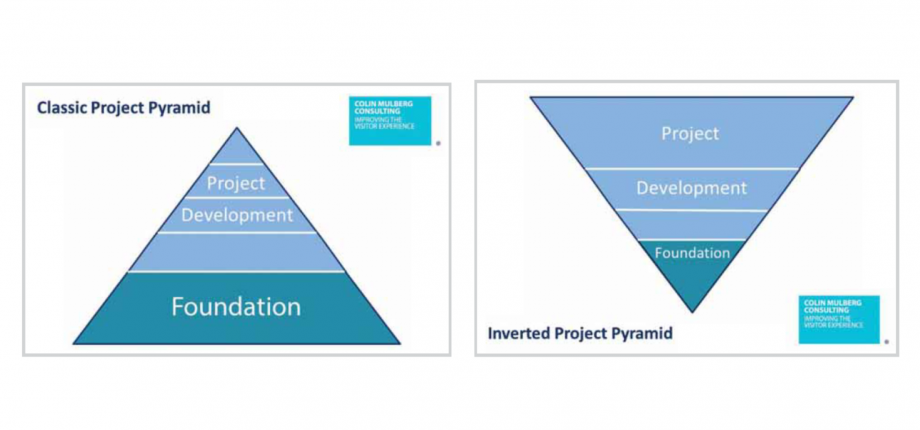Stay in touch with the latest news from AIM and get information on sector grants, jobs and events with our free fortnightly E-News.
Strong foundations for successful projects

Consultant and AIM Associate Supplier Colin Mulberg highlights the importance of solid groundwork to project delivery.
In the early stages of a significant project, it is tempting to push hard towards getting things moving. However, it pays to spend a little more time at the start, considering realistic aspirations, who will benefit and what will deliver most value for money. To prepare the groundwork, it is worthwhile examining the project from internal and external perspectives.
Organisational benefit and alignment
An important first step often overlooked is to have an honest examination of how well the project sits within your organisation. Spend time defining exactly how the organisation will benefit and what you want out of the project – ‘what’s in it for you?’ Check how well the project aligns with and furthers your mission, aims, and values, including its long-term legacy.
It could be that there are particular problems that you want the project to fix or specific outcomes that match established organisational need. These benefits should then be the main driver of the project.
Consider how much the project departs from what you’ve done before and the overall amount of change. Spending considerable time, effort and resources on a project is a great opportunity to do things differently and instigate a programme of change as an organisational benefit. Encouraging change can also nurture the excitement and passion that lifts a project.
However, the project could also have implications for other work and and capacity levels. Projects also have a wider ‘opportunity cost’ as pursuing this project may mean not focussing on other opportunities that arise.
Looking at your situation as a whole will reveal if the project is the best way of delivering your organisation’s priorities. For example, many projects start off by seeking to increase visitor numbers or increase visits by specific audiences when increasing earned income is the most pressing need and other ways of doing this have not been explored fully.
Projects can be considered a mixed investment of resources, time, energy, emotion, and money. The project will be stronger if it is clear early on what you will get back, the benefits of the project over other courses of action and the project’s success criteria. Good projects closely match organisational need and are in line with what you need to do anyway. This means that work on the project will benefit the organisation, even if the project fails to secure funding and stalls at a later stage.
Evidence base
Really clear benefits from the project should be supported by evidence of need and that the project is the best solution. It pays to be specific about who the project is for and how you know that they will want the outcomes. This is especially important for projects that face outwards, to visitors and external stakeholders. An early focus on key audiences will help determine what is already known about them and any current evidence that they will be attracted to the project.
Identifying a range of indicators will show the degree of audience interest and engagement. Any evidence gaps can be plugged by further visitor research, including trialling project approaches to see how well they work and consulting with specific audiences. Research can cover a range of in-house activity (e.g. events that indicate audience interest) as well as established standard visitor questionnaires.
Creating a strong evidence base reduces project risk and increases the chance of success.
Solid project foundation
Determining the benefits of the project, target beneficiaries/audiences and evidence that the project is needed and will be successful are the platform on which good projects are built. This can be developed into a strong project rationale with a compelling story that is easy to communicate to others – stakeholders, governing board, staff, volunteers, visitors, etc. A clear rationale also improves the quality of funding bids.
Signing-off the rationale gives a firm basis to the project and builds a solid project foundation. The rationale guides further stages of development and helps when engaging designers, architects, specialists, and consultants as the project vision is clear and agreed. The rationale can also be used to audit the project through each development stage.
Building a solid project foundation gives a base on which to sit later decisions as the project progresses. In a classic project pyramid model, much of the hard work is done building the project foundation and decisions decrease in volume and importance as the project progresses.
In contrast, difficult projects often end up being an inverted project pyramid, where the project foundation is poorly defined and shallow. This means that key issues and decisions are left until later in the project, often causing disagreements, stress, rushed decision-making and increased costs.
So, making the effort to work though the elements of the foundation and rationale starts your project on a sound footing, saves time and budget in later stages and gives the best chance of using your resources to make the project a success.
Click here to find out more about Colin Mulberg Consulting>>
